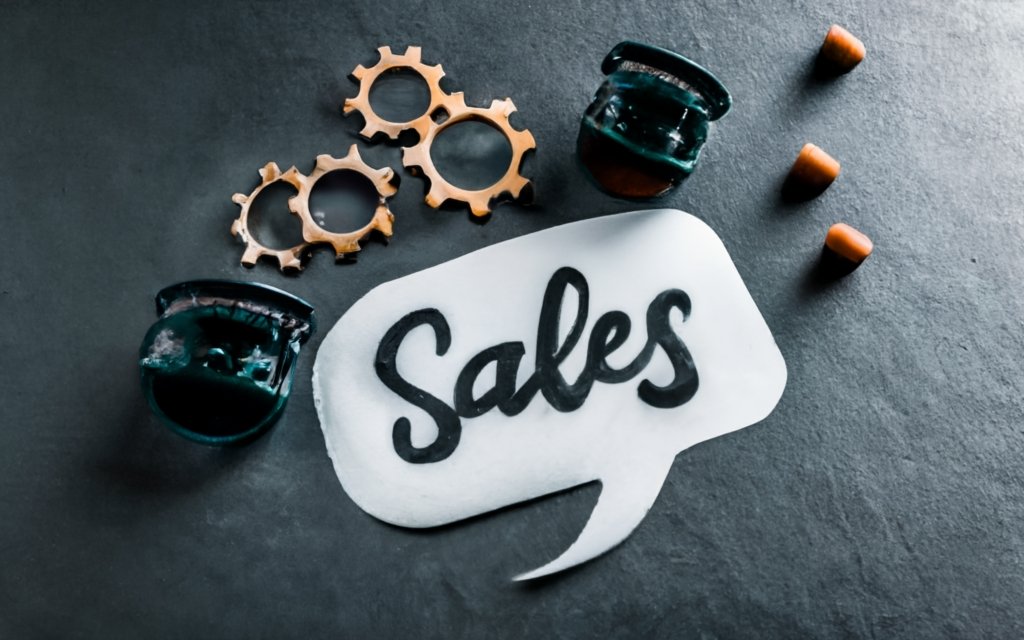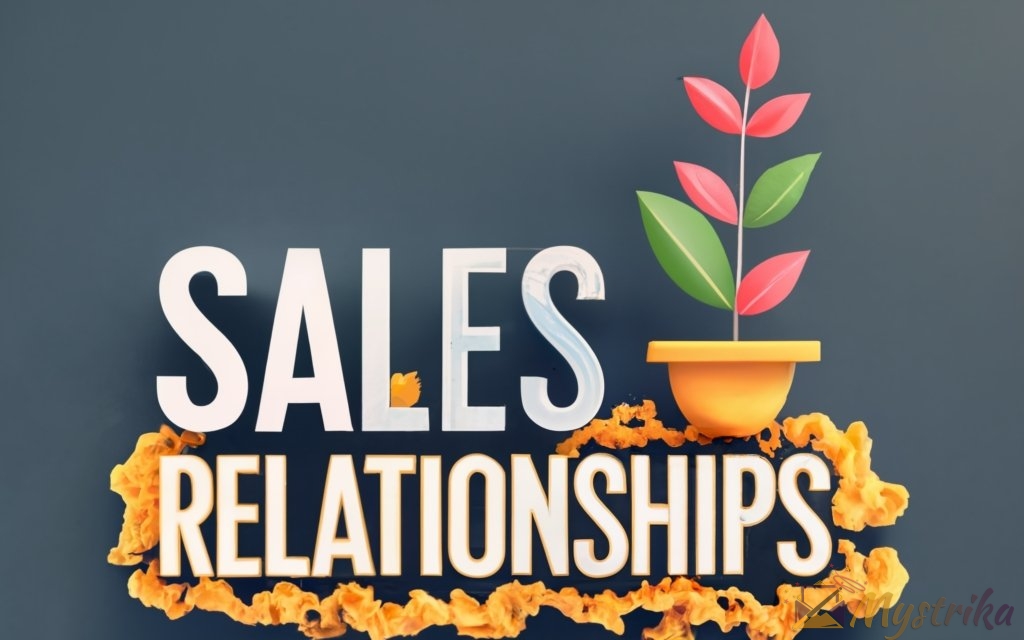Turning one-time customers into lifelong fans. Discover the essential strategies for building strong, profitable long-term sales relationships.
Building strong sales relationships is vital for business growth. This comprehensive guide covers actionable tactics to provide exceptional service, understand customers, build trust, leverage technology, and measure relationship success. Learn the secrets to earning loyalty, reducing churn, generating referrals, and driving growth through authentic sales connections.
Sales Relationship Building Strategies
Crafting strong bonds with customers requires a strategic, multifaceted approach across your organization. From customer service to marketing and beyond, there are many effective techniques for nurturing lasting B2C and B2B sales relationships.
Provide Exceptional Customer Service
Delivering responsive, personalized and above-and-beyond customer service is the foundation for any successful sales relationship.
Respond Quickly to Inquiries
According to research from HubSpot, 42% of customers expect a response within one hour when reaching out online. For optimal results:
- Set reasonable expectations – Publish your expected response times on your website and automatically notify customers when you receive their inquiry.
- Meet urgent needs ASAP – Have team members dedicated to assisting customers with pressing questions in real-time via phone, chat or text.
- Follow up on open requests – Use CRM task automation to ensure every inquiry gets addressed promptly. Send an email if you need more time.
- Provide self-service options – FAQs, help centers and chatbots give customers 24/7 access to instant answers.
Offer Personalized Support
Connecting with customers as individuals is key for sales relationship growth. Tactics include:
- Capture detailed profiles – Collect info on needs, challenges, preferences and motivations.
- Take extra time – Allow more generous call lengths and avoid rushing customers off the phone.
- Act as a consultant – Ask probing questions, actively listen, and provide tailored solutions.
- Share relevant content – Send customized content on topics they care about.
- Remember key occasions – Wish happy birthdays, mark purchase anniversaries, etc.
Go Above and Beyond Expectations
Surprising customers with more than they expect highlights how much you value them as individuals. Consider:
- Sending handwritten notes for no reason other than to say thanks.
- Giving loyalty perks like free products/services after repeat purchases.
- Making charitable donations in top customers’ names to causes they support.
- Replacing products without hassle if anything underperforms.
- Inviting feedback and implementing suggestion requests.
Get to Know Your Customers
You can’t build connections without first understanding who your customers are beyond basic demographics.
Create Detailed Buyer Personas
Well-researched buyer personas help you grasp customers’ deeper motivations and make data-driven decisions. Be sure to capture:
- Demographic traits like job title, age, location
- Psychographic details on values, priorities, interests
- Pain points and challenges they face
Map Out Their Journey
A customer journey map analyzes every touchpoint as prospects engage with your brand. Look for relationship-building opportunities at phases like:
- Awareness – Share useful resources to nurture without selling.
- Consideration – Focus calls on constructive consultation.
- Conversion – Make onboarding consultative and welcoming.
Build Individual Customer Profiles
While personas provide a demographic overview, individual profiles help sales reps personalize interactions. Note things like:
- Personal details discovered through conversations
- Specific needs or preferences flagged
- Any concerns or objections raised
Customize Your Communication
Tailoring your messaging and channels to align with how each customer likes to engage makes a big impact.
Personalized Content and Recommendations
Use data and insights from CRM profiles to segment and deliver content that resonates. Examples include:
- Targeted email campaigns with relevant subject lines
- Custom product suggestions based on purchase history
- Personalized website experiences for returning visitors
Relevant, Valuable Messaging
Avoid bombarding customers with spray-and-pray emails. Instead, nurture relationships by:
- Only contacting them when you have something useful to offer
- Sending helpful, non-promotional value-adds
- Providing exclusive previews of upcoming releases
Consistent Nurturing and Follow-Ups
- Set cadences using marketing automation to maintain visibility.
- Schedule regular business review meetings.
- Continue nurturing post-sale with education and tips.
Deliver Real Value
Building loyalty means going beyond your core offering to provide utility and support.
Share Expertise and Insights
Position yourself as a trusted advisor by consistently creating and sharing valuable content, not just sales materials.
- Publish helpful blog posts, guides and videos on your website.
- Seek opportunities to provide quotes or expert perspective to media outlets.
- Offer access to educational webinars or panel discussions.
Make Introductions to Partners
Proactively connect customers to peers and other companies you partner with that can help them. Facilitating these win-win scenarios breeds goodwill.
Provide Exclusive Perks and Offers
Surprise and delight customers with VIP treatment through:
- Special discounts, sales and promotions
- First access to new products/features
- Free gifts or bonus extra services
Build Trust and Rapport
Trust lies at the core of every strong relationship. Reinforce it by showing customers they come first.
Honesty and Transparency
Never mislead or fail to communicate realities – even if it means losing a deal. Cultivate trust with integrity.
Follow Through on Promises
Hit every deadline, deliver work as scoped, fulfill agreements – big and small. Reliability builds confidence.
Meaningful Conversations
Have real dialogues – not just transactional calls. Share company updates and ask about their business. Make connections.
By aligning your customer service, marketing and company culture around these relationship-focused values and tactics, you equip your team to organically build durable sales bonds.

Using Technology to Enhance Sales Relationships
While authentic human connections are irreplaceable, the right sales and marketing technology provides vital support for nurturing relationships at scale.
CRM Platforms
A customer relationship management (CRM) system serves as the central database for managing sales relationships. Key features include:
Manage Contacts and Track Interactions
- Maintain records of all customer and prospect details, conversations, activities, etc. in one place.
- Log emails, calls, meetings and other touchpoints.
- Set reminders for timely follow-ups.
Store Customer Data and History
- Capture every interaction and piece of information in timeline view.
- Add notes on needs, challenges, upsells opportunities, etc.
- Keep a long-term record of the relationship’s evolution.
Enable Personalization
- Integrate data from marketing, service, commerce and other systems.
- Build comprehensive profiles from multichannel interactions.
- Segment customers for tailored communication and recommendations.
With a CRM, sales teams always have access to each contact’s full context to engage meaningfully.
Marketing Automation
Marketing automation software like HubSpot facilitates Relationship selling by:
Sending Targeted, Timely Messages
- Use insights from CRM profiles to personalize content.
- Set up behavioral-based nurture sequences.
- Trigger relevant messages based on actions.
Tracking Engagement and Campaign Performance
- See who opens emails, clicks links and engages with content.
- Continuously refine campaigns based on data.
- Identify upsell opportunities based on interest.
Nurturing Leads and Customers
- Guide prospects through each buying stage with tailored messaging.
- Develop loyal customers through post-sale education.
- Reactivate dormant customers with re-engagement campaigns.
Automating relevant communication at scale while still delivering personalization allows for meaningful relationship-building.
Sales Engagement Tools
Sales engagement platforms like Outreach.io streamline communicating with many prospects through:
Streamlining Communication
- Sync email and calling directly from CRM records.
- Use templates to send tailored messages fast.
- Quickly respond to incoming lead interactions.
Quickly Responding to Prospects
- Set rules and workflows to notify reps of key prospect events.
- Click-to-call, email and text right from prospect profiles.
- Log all attempts and touchpoints automatically.
Seamlessly Integrating With Other Systems
- Connect directly with essential platforms like email, phone, calendar and video.
- Automatically sync data across sales tech stack.
- Unify communication channels into a single sales workflow.
By handling manual tasks and coordination, sales engagement tech allows reps to focus on building rapport through meaningful, personal outreach.
The right mix of CRM, marketing automation, and sales engagement tools doesn’t replace genuine human relationships – it empowers sales teams to build those relationships at scale and deliver the ideal end-to-end customer experience. With data and technology taking care of the busywork, reps can devote their energy to the human moments that truly matter.
Measuring the Success of Sales Relationships
To refine your sales relationship-building approach, it’s important to monitor the right metrics that indicate you’re on the right track. Key indicators to track include customer satisfaction, lifetime value, retention and repeat business.
Customer Satisfaction Scores
Customer satisfaction (CSAT) scores provide quantitative data on how happy customers are with their interactions. Typically captured via surveys or reviews, key metrics include:
- CSAT rating – The aggregated score from a question like “On a scale of 1-10, how satisfied were you with the customer service you received?”
- Positive rating % – The percentage of customers who gave a score of 8 or above on a CSAT survey. Industry benchmarks range from 80-95%.
- Number of ratings – The volume of ratings and reviews received. More responses provide better insights.
Review sites like Trustpilot also have advanced algorithms that assign an overall company score based on ratings, popularity, credibility and other variables. Tracking your overall rating over time shows if customers are increasingly satisfied.
Net Promoter Score
Net Promoter Score (NPS) reveals customer loyalty and likelihood to recommend your brand. It’s measured by asking:
“On a scale of 0-10, how likely are you to recommend [Your Company] to friends, family or colleagues?”
Based on their score, customers are segmented as:
- Promoters (9-10) – Loyal enthusiasts who will refer others.
- Passives (7-8) – Satisfied but unenthusiastic. Vulnerable to competition.
- Detractors (0-6) – Unhappy customers who can damage your brand reputation.
Subtracting the percentage of detractors from the percentage of promoters yields your NPS, which can range from -100 to +100. An NPS above 0 is considered “good.”
Monitoring changes in your NPS over time indicates if you’re cultivating greater loyalty through stronger sales relationships.
Customer Retention and Churn Rates
Analyzing customer retention and churn metrics illustrates how well you’re retaining and building on relationships long-term. Key rates to calculate include:
- Customer retention rate – The percentage of customers retained over a period. Rates above 60% are favorable.
- Customer churn rate – The rate at which you lose customers. Lower is better.
- Expanded customer value % – The % of customers that purchased add-ons or upgrades. Shows growing relationship strength.
- Reactivation % – The % of lapsed customers you convert again. Winning them back indicates equity in the relationship.
Recurring check-ins through account reviews, satisfaction surveys and other nurturing touchpoints can help improve retention over time.
Repeat Purchases and Upsells
Signs that customers are continuing to come back and deepen their relationship also signal you’re making sales connections effectively.
- Repeat purchase rate – The percentage of customers that buy again within a given timeframe. 40%+ is strong.
- Average repeat purchases – The average number of repeat transactions per customer. Growth reflects strengthening loyalty.
- Upsell/cross-sell conversion rate – The percentage of customers purchasing additional products. 5-15%+ is solid.
- Share of wallet – Your percentage of total spend in your product category. Increasing share of wallet shows deepening relationships.
The more customers continue purchasing from you, especially higher-value items, the better you’re nurturing lasting, fruitful sales bonds.
By regularly analyzing metrics across satisfaction, loyalty, retention and repeat business, you gain data-backed insights on what’s resonating in building customer relationships and where improvements may be needed. Tracking performance over time helps you quantify the revenue impact of strengthening sales connections.

Maintaining Strong Sales Relationships Long-Term
The work doesn’t stop once you’ve established a sales relationship. In fact, ongoing nurturing is required to strengthen bonds over months and years. Tactics to maintain durable and fruitful long-term sales relationships include:
Consistent, Quality Communication
Frequent yet meaningful communication shows customers you value the relationship.
- Set ideal contact cadences based on customer preferences and industry norms. Monthly or quarterly are common.
- Segment outreach so communications are relevant. Send new product updates to heavy users, industry news to executives, etc.
- Make it personalized with details like the customer’s name, company, past conversations and preferences.
- Use multiple channels like email, direct mail, phone, etc. based on what they best respond to.
- Provide value through helpful content, not just sales pitches. Send articles, event invites, etc.
- Monitor engagement with every message and outreach channel. Adapt your cadence and channels based on feedback.
- Automate follow-ups using CRM and marketing automation to stay top of mind.
- Listen first whenever you connect. Discuss their current needs and challenges before pitching.
Ongoing Education and Value Delivery
Customers will grow loyal when you actively make them smarter, more capable and well-informed.
- Share relevant content like blog posts, guides, webinars and videos to provide continuous value.
- Host educational seminars on topics customers care about, with thought leadership and best practices.
- Send alert bulletins on new regulations, cybersecurity threats and other material developments.
- Introduce capability-expanding integrations, add-ons and partnerships. Surprise customers by unlocking new ways to extract value.
- Solicit feedback on desired educational topics. Create content roadmaps tailored to customers.
- Promote their achievements publicly through case studies, awards and press releases when appropriate.
- Measure knowledge gain with assessments to refine your education approach over time.
Account Reviews and Strategic Planning
Regular business reviews position you as a strategic partner, not just a vendor.
- Schedule quarterly account reviews to discuss what’s new, assess needs and set goals. Send recap notes post-meeting.
- Analyze usage data to identify opportunities for process improvements and new use cases.
- Develop quarterly and annual plans outlining upcoming projects, campaigns and initiatives you’ll partner on.
- Set targets and KPIs for relationship growth. Review progress on leading indicators like engagement, satisfaction and retention.
- Institutionalize governance with quarterly business reviews across senior stakeholders on both sides.
Loyalty Programs and Exclusive Offers
Special perks and privileges make customers feel valued and boost perceived value.
- Create VIP tiers with points, benefits and discounts that improve the more customers spend.
- Offer exclusive access to events, early releases, roadmap input and sneak peeks.
- Send gifts on loyalty milestones and holidays. Make them meaningful and useful.
- Cultivate brand ambassadors who actively share about your company. Send them special swag and rewards.
- Donate to causes they care about in top customers’ names.
- Surprise and delight randomly with small acts of kindness just because.
By continually strengthening connections with excellent communication, education, planning and loyalty incentives, you build hard-to-break bonds that pay dividends for years to come through expanded lifetime value.
Overcoming Sales Relationship Challenges
Even with the best strategies, sales relationships can still hit roadblocks. Being aware of common pitfalls allows you to proactively avoid them.
Lack of Personalization
In an age where customers expect tailored experiences, failing to personalize erodes trust and loyalty. Watch out for:
- Spray-and-pray emails – Avoid sending the same generic msgs to every contact. Use merge tags and segmentation.
- No custom recommendations – Leverage data and insights to provide suggestions based on purchase history and needs.
- Interactions lack context – Make sure reps have access to detailed CRM profiles before engaging customers.
- Incongruent cross-channel experiences – Maintain consistency in personalized messaging across touchpoints.
- No progress tracking – Follow up on past conversations and pick up where you left off.
Fixes:
- Invest in building comprehensive individual customer profiles in your CRM.
- Use marketing automation to deliver targeted, relevant messaging and offers at scale.
- Equip sales reps with every customer’s history and preferences.
- Monitor engagement across channels and fine-tune your personalization.
Poor Communication Practices
Flawed outreach and responses can irreparably damage fragile relationships. Beware of:
- Over-communication – Avoid sending too many sales emails or calls without value. Honor contact preferences.
- Under-communication – Stay top of mind with existing customers through regular nurturing touchpoints.
- Hard-selling – Focus on providing value vs pushing products in every interaction. Listen first.
- Unclear messaging – Ensure correspondence is concise, relevant and professional.
- No omnichannel coordination – Orchestrate outreach cadences across email, calls, text, chat, direct mail, etc.
Fixes:
- Document contact frequency preferences and optimize your nurture streams.
- Add value through consistent education, insights and relationship-building over promotion.
- Invest in communications training for sales and support staff.
- Monitor channel-specific engagement and continually refine your outreach.
Not Delivering Promised Value
Nothing strains a relationship faster than failing to deliver on expectations you set. Watch for:
- Overpromising capabilities or speed – Understand realistic outcomes and set appropriate expectations upfront.
- Billing issues – Proactively notify customers of upcoming charges to avoid surprises. Be transparent.
- Service problems – Empower support teams to swiftly address issues, own mistakes and make customers whole.
- Lackluster onboarding/implementation – Invest in ensuring customers successfully adopt products from the start.
- No post-purchase nurturing – Continue providing education and communicating after the sale to drive adoption.
Fixes:
- Audit sales collateral and employee promises to ensure alignment with actual delivery.
- Make notifications and billing as transparent as possible.
- Build robust onboarding, training and ongoing support resources.
- Nurture customers post-sale by proactively checking in and sharing educational content.
Failing to Build Multiple Internal Champions
Relying on one internal relationship creates huge risk if that person leaves or disengages. Ensure you:
- Identify all stakeholders involved in decision-making to sell into. Use tools like LinkedIn Sales Navigator to discover connections.
- Avoid over-relying on one champion. Build rapport with multiple executives, end users and influencers at the company.
- Continually expand your network by asking about team structures and connecting with new stakeholders as they join.
- Use CRM to document all contacts, interactions and preferences in one place for cross-team visibility.
- Facilitate peer connections between your champions and other users so they influence each other.
With vigilance on these potential pitfalls, you can catch relationship issues early and course-correct. The keys are consistently showing customers they matter through value and great experiences, while also learning from any missteps.

Key Takeaways for Building Strong Sales Relationships
Developing authentic connections with customers that spark loyalty, retention and growth requires strategic relationship-focused efforts across your organization. Key takeaways include:
- Sales relationships directly impact revenue by driving higher lifetime value, lowering churn, generating referrals and enabling repeat business. Make nurturing them a priority.
- Provide exceptional, personalized service; understand customers deeply; customize communication; deliver real value beyond the product; and build trust through integrity.
- Leverage CRM, marketing automation and sales engagement technology to enhance relationships at scale while retaining human touch.
- Track satisfaction, referrals, retention and repeat purchase metrics to measure relationship success and guide improvements.
- Maintain long-term bonds through consistent, high-value communication, education, account planning and loyalty incentives.
- Avoid pitfalls like lack of personalization, communication gaps, unmet expectations and relationship over-dependence.
- Keep strengthening connections and the customer experience across the lifecycle. The returns compound when you get sales relationships right.
By implementing these strategies, you can shift from transactional sales to relationship selling – unlocking happier, more engaged customers that fuel sustainable growth.
Frequently Asked Questions About Building Sales Relationships
Why are sales relationships important?
Sales relationships lead to higher customer lifetime value, lower churn, increased referrals and repeat business. The stronger the relationship, the more revenue and growth it ultimately drives.
What are some best practices for relationship selling?
Key strategies include providing exceptional service, deeply understanding customers, customizing communication, delivering value beyond the product, building trust and rapport, and leveraging technology like CRM and automation.
How can I measure the strength of sales relationships?
Track metrics like customer satisfaction scores, Net Promoter Score, retention and churn rates, repeat purchase rates, share of wallet, upsell/cross-sell conversion rates and expanded customer value.
How often should I communicate with customers?
Aim for consistent cadences based on each customer’s preferences. Most business-to-business relationships warrant check-ins every month or quarter. Ensure you always provide value, not just sales pitches.
How can I maintain strong relationships long-term?
Keep providing value through helpful content, educational seminars, capability expansions and introductions. Do quarterly account reviews. Create loyalty programs with exclusive perks. And nurture continuously through marketing automation.
What are some sales relationship pitfalls to avoid?
Watch out for lack of personalization, poor communication habits like spray and pray outreach, failing to deliver promised value, and not building rapport with multiple internal champions.
How can technology help build connections?
CRM provides a unified customer database. Marketing automation nurtures leads and customers at scale. Sales engagement systems streamline outreach. Together they enhance relationships while optimizing human interactions.
How can I recover after a misstep damaged a relationship?
Be honest, own the mistake, apologize sincerely, and explain how you’re going to make it right. Then do everything you can to redeem yourself going forward through consistent value delivery and regaining their trust.

